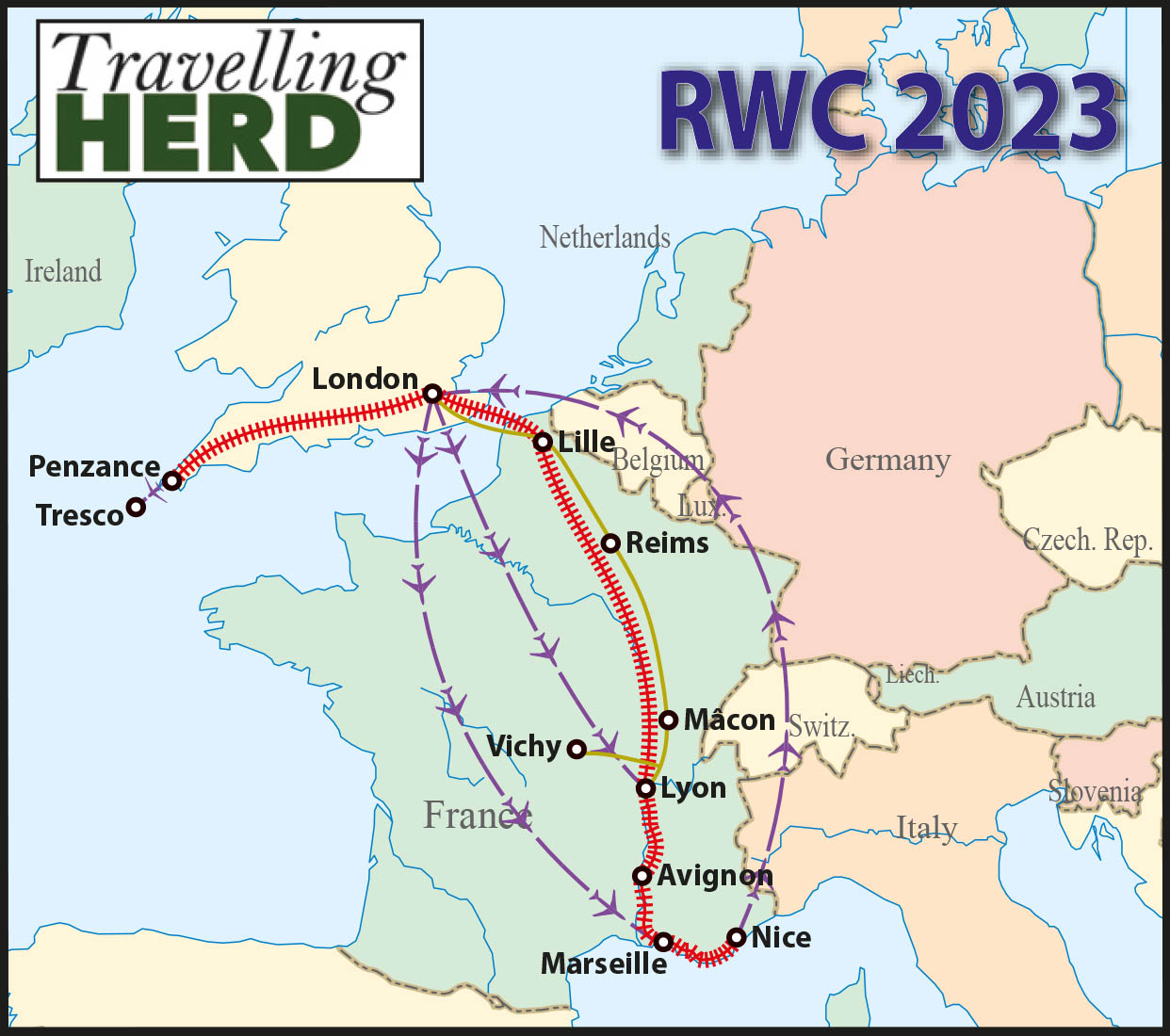Read this blog: The one where we sample the spa waters of Vichy
Saturday 30th September 2023
In the morning we drove to the lovely spa town of Vichy.
As with many natural springs, the Romans set the precedent and established a settlement here in the first century AD, known as Vicus Calidus or Aquæ Calidæ [hot water]. We set up our own encampment at Parc Camping les Acacias in Bellerive-sur-Allier, across the river from Vichy itself.
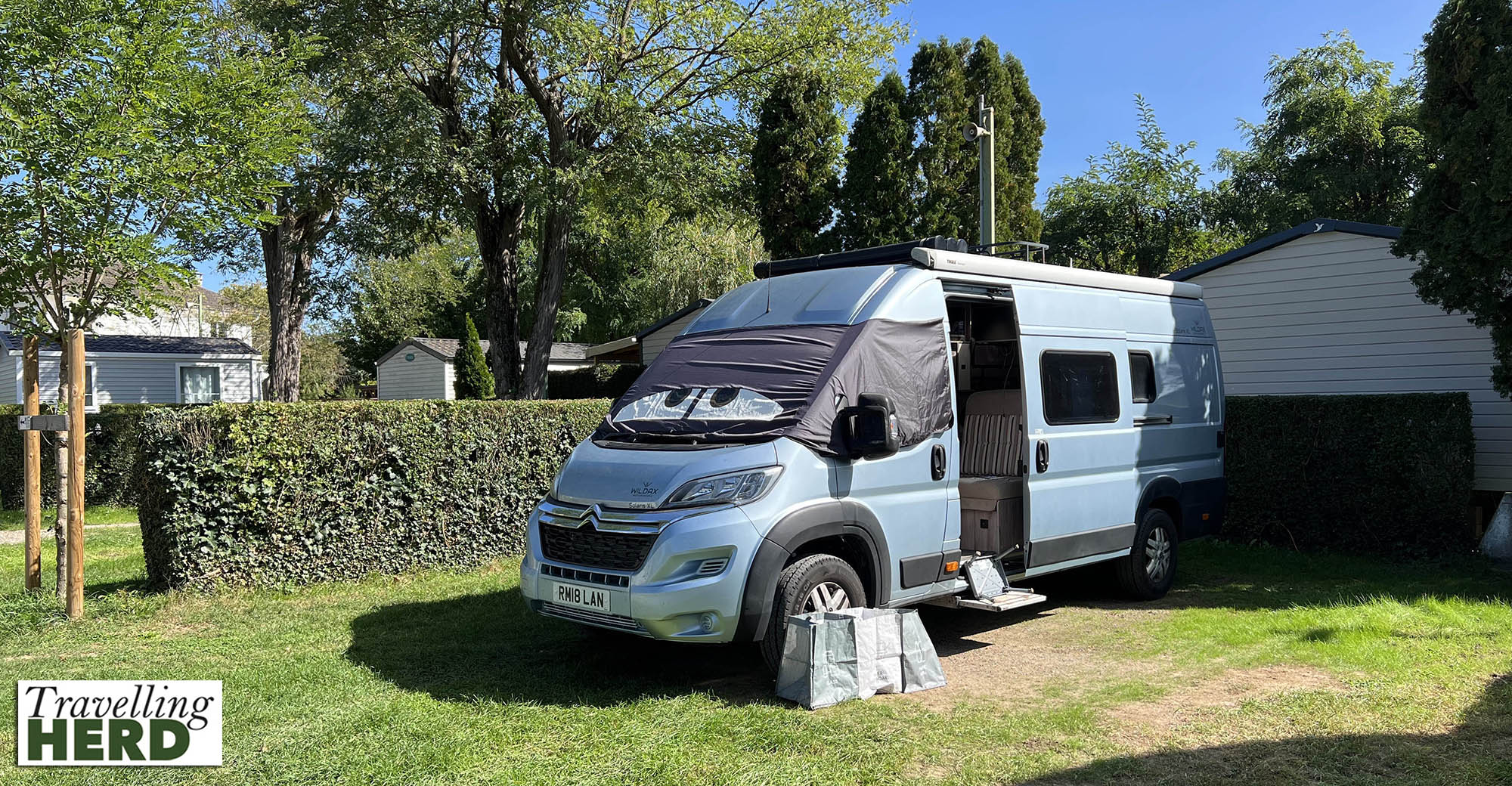
The campsite is quiet now and many of the facilities are closed for the end of the season but it has swimming pools and a water slide which would be great for families in the summer. However, since our pitch is right next to the water slide, we appreciate the comparative peace and quiet at the end of the season. There is a gate leading straight out onto the embankment and we took a pleasant riverside stroll into Vichy itself.
The city became a fashionable destination in the late eighteenth century when the French aristocracy began visiting to take the waters for therapeutic reasons and the Emperor Napoléon Bonaparte I himself originally ordered the creation of the Parcs des Sources, an oasis where the nobility could see and be seen whilst taking a healthy restorative stroll.
Subsequently, Napoléon III visited regularly between 1861 and 1866 and his patronage prompted many changes and improvements. Flood defences were constructed and the old marshland was replaced by 32 acres of landscaped gardens whilst chalets and pavilions were built along the newly laid-out boulevards.
This popularity was subsequently to provide the infrastructure necessary for a more regrettable period in the city’s history.
Many luxurious hotels were built to welcome the increasing number of visitors. Only Paris and Nice had more available hotel accommodation and this, coupled with the fact that Vichy had the sole international telephone exchange in France outside the capital, meant that in 1940 the town was chosen as the HQ for Marshal Pétain and his government. During WWII, Vichy France was ostensibly an independent French state, but in reality half of its territory was under harsh German control following the signing of the 1940 armistice and the regime collaborated with the Nazis and was involved in anti-semitism and mass deportations.
Our walk first took us past an imposing memorial which commemorates the residents of Vichy who died in the First and Second World Wars and the wars in Indochina (1946-1954) and Algeria (1954-1962).
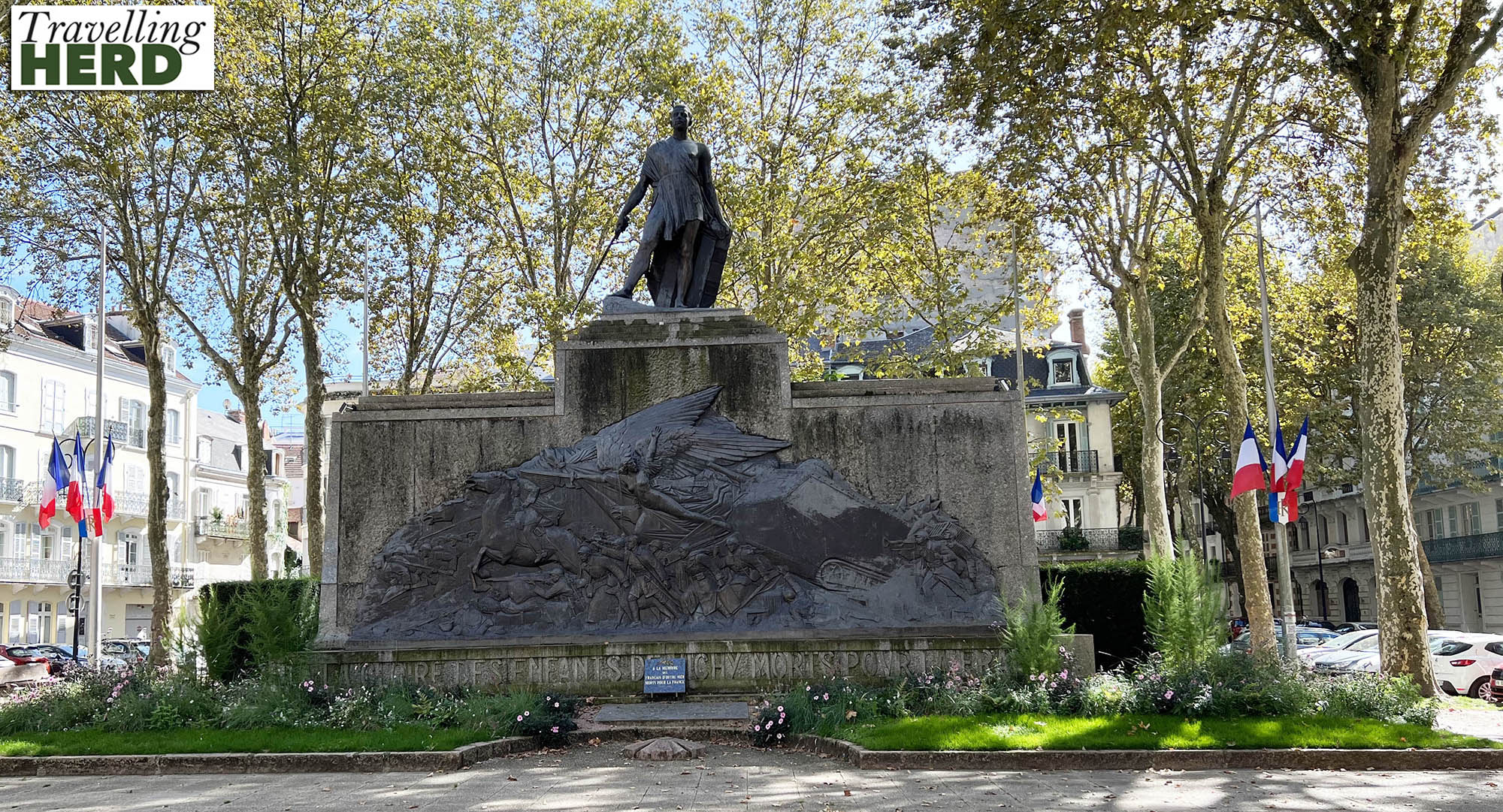
The nearby Hotel des Ambassadeurs was one of the hotels built around the turn of the century for those visiting for ‘the cure’ but during WWII it was home to the diplomatic staff who were displaced from Nazi-occupied Paris. It has now been converted to private residences but retains the imposing grandeur of its heyday.

Napoléon III commissioned several chalet style cottages along the Boulevard des États-Unis. The first of these is known as Chalet Marie-Louise and was completed in 1863. Decorated with a fake brick checkerboard pattern in ochre and yellow it has galleries on two levels overlooking the street, where the emperor apparently liked to sit and smoke with friends. However, he tired of being so visible to the public and subsequently commissioned two further residences along the same street backing on to Parc Napoléon III with more privacy integrated into the design.
It is strange to think that Napoléon III, a man who at one time had such influence and power, lived out his days in Chislehurst in Kent, not far from our home.
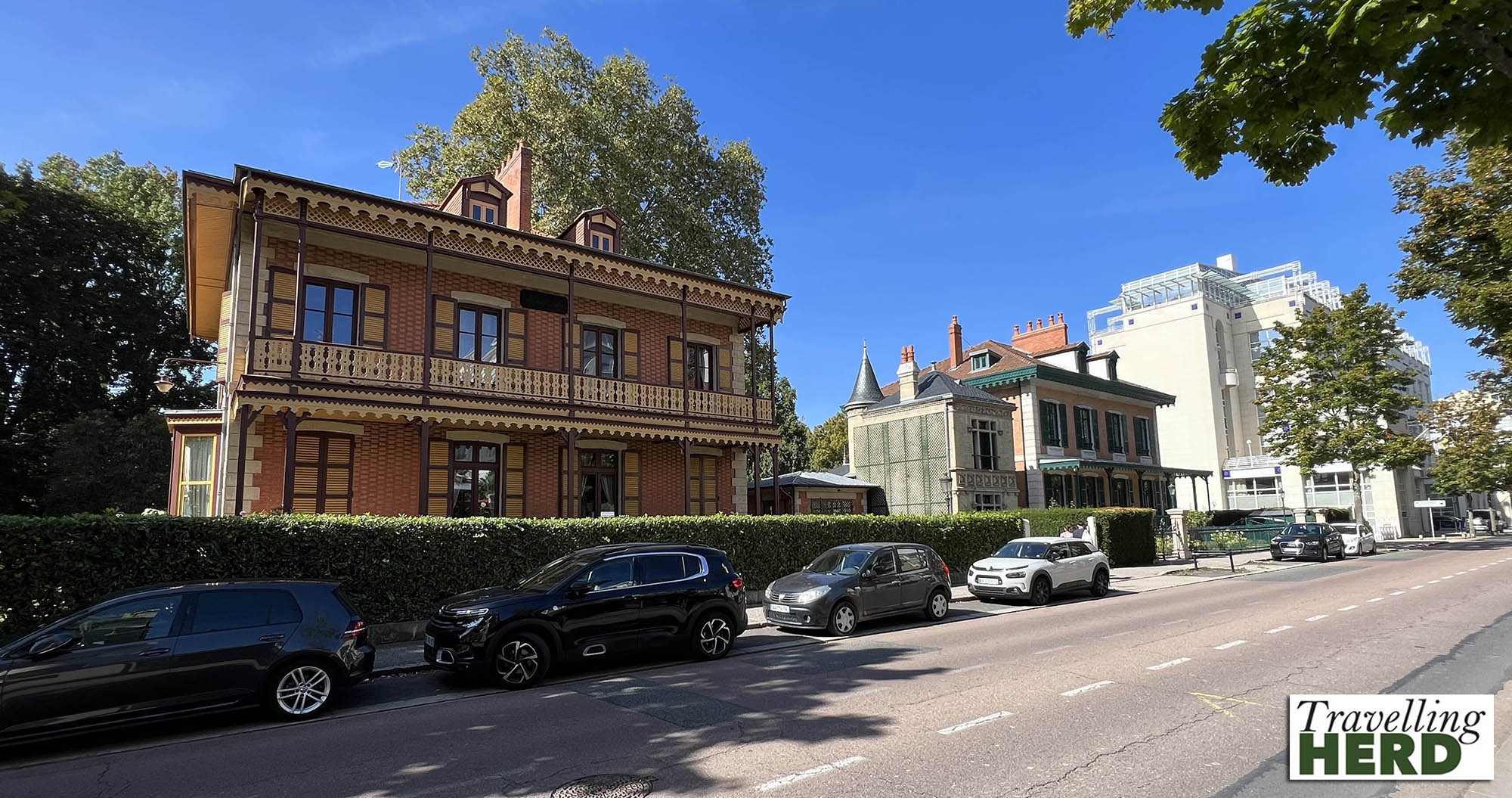
Built between 1899 and 1903, the Thermes des Dômes is an unusual Neo-Moorish style building which was enlarged in the 1930s and still offers treatments.

Robert, who usually plans to visit as many places as possible on a trip, found that when he is driving rather than travelling by train, he needs a little more downtime. We really liked both the town and the campsite and so thought we would stay an extra day. The original plan detailed in the spreadsheet was to spend one night in Dijon but this would involve a long drive there and then another long drive back to Lyon. Unfortunately when Robert asked to extend our stay at Parc Camping les Acacias he was told that the site was closing the next day. It normally closes at the end of September but as October 1st fell on a Sunday, the site was open till Monday. We considered booking a room at the hotel next to Thermes des Dômes but as the hotel had underground parking, Al the motorhome would have been too tall.
Vichy is one of The Great Spa Towns of Europe, an international UNESCO World Heritage Site consisting of 11 spa towns [although some of them are cities] spread across seven countries which grew up around natural mineral water springs [see map below]. We have already been to Bath and Karlovy Vary, and now Vichy, and given how lovely these are Matilda felt we should plan to visit more.
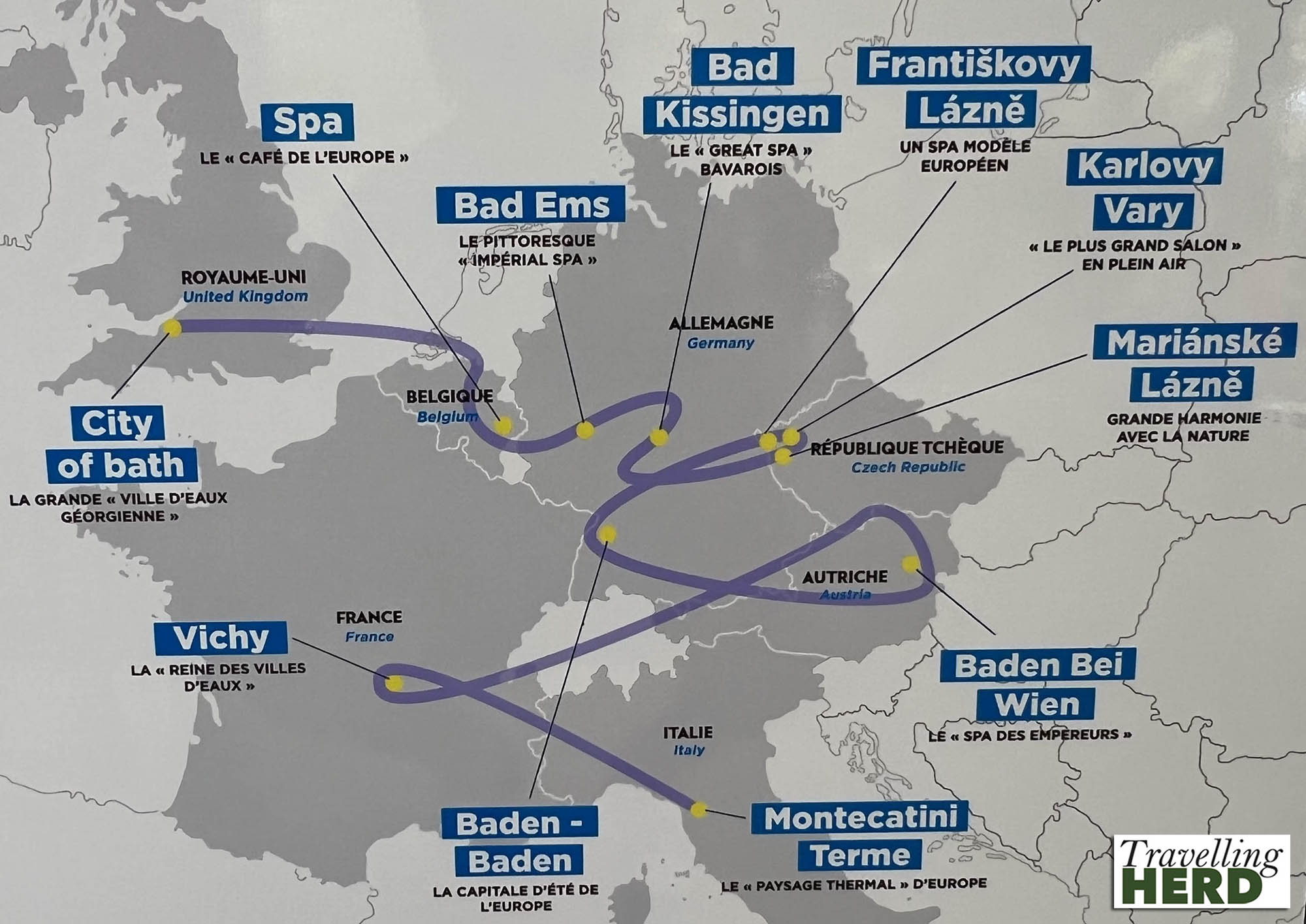
The therapeutic experience in Vichy is centred around the Hall des Sources: an amazing Art Nouveau metal and glass pavilion. There are separate entrances for tourists and for patients or ‘curists’. Tourists may enter at one end where a fountain bar dispenses the various different available spring waters which can be tasted and/or bottled.
‘Curists’ on the other hand are issued with electronic cards and can tap [no pun intended] to enter the main body of the hall where the springs all run from multiple spouts and signs give precise information about the temperature and mineral content of each spring. A few chairs and tables provide somewhere to sit.
The waters are rich in trace elements such as lithium and fluorine and high in sodium bicarbonate and different spring waters are recommended for different illnesses, such as digestive disorders and joint ailments, based on their mineral composition. Despite not having a qualifying condition or an access card, we managed to follow someone in to the main hall who kindly held the door for Matilda. Perhaps she looked like she needed to take the cure? When we tasted them, the waters certainly had a bit of a zing from the minerals but the Hall des Sources was surprisingly empty.
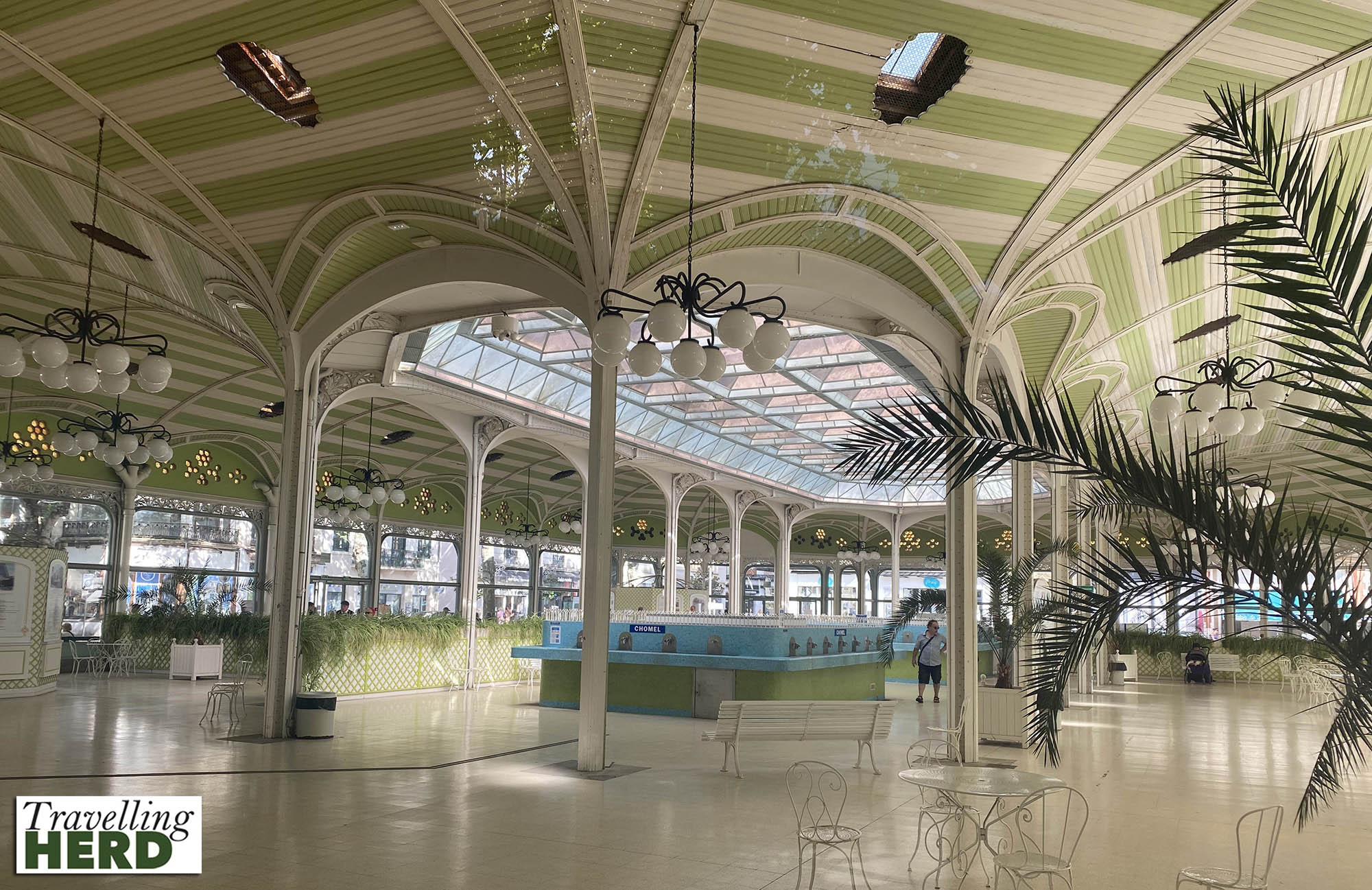
Each spring emerges at a different temperature and this ranges from 73ºC at the Antoine Spring to 14ºC at the Lafayette Spring. The bubbling sources of the Grille and Chomel [see Video of the day] are encased in glass.
The Parc des Sources is currently being renovated so we were limited to the two 700 metre-long covered galleries with decorative ironwork running along either side of the gardens. The Hôtel du Parc, overlooks the park and during the war it housed the offices of France’s wartime Vichy Regime and Chief of State Marshal Pétain’s private apartment was on the third floor.
Just in front stands a simple memorial which states that on 26th August 1942 the government based here launched a roundup of foreign Jews throughout the ‘free zone’. More than 6,500 people were arrested on that day including many children and delivered to the Nazi occupied zone from where they were deported to Auschwitz. The monument thanks the ‘French population and the Catholic and Protestant clergy’ who opposed these measures.
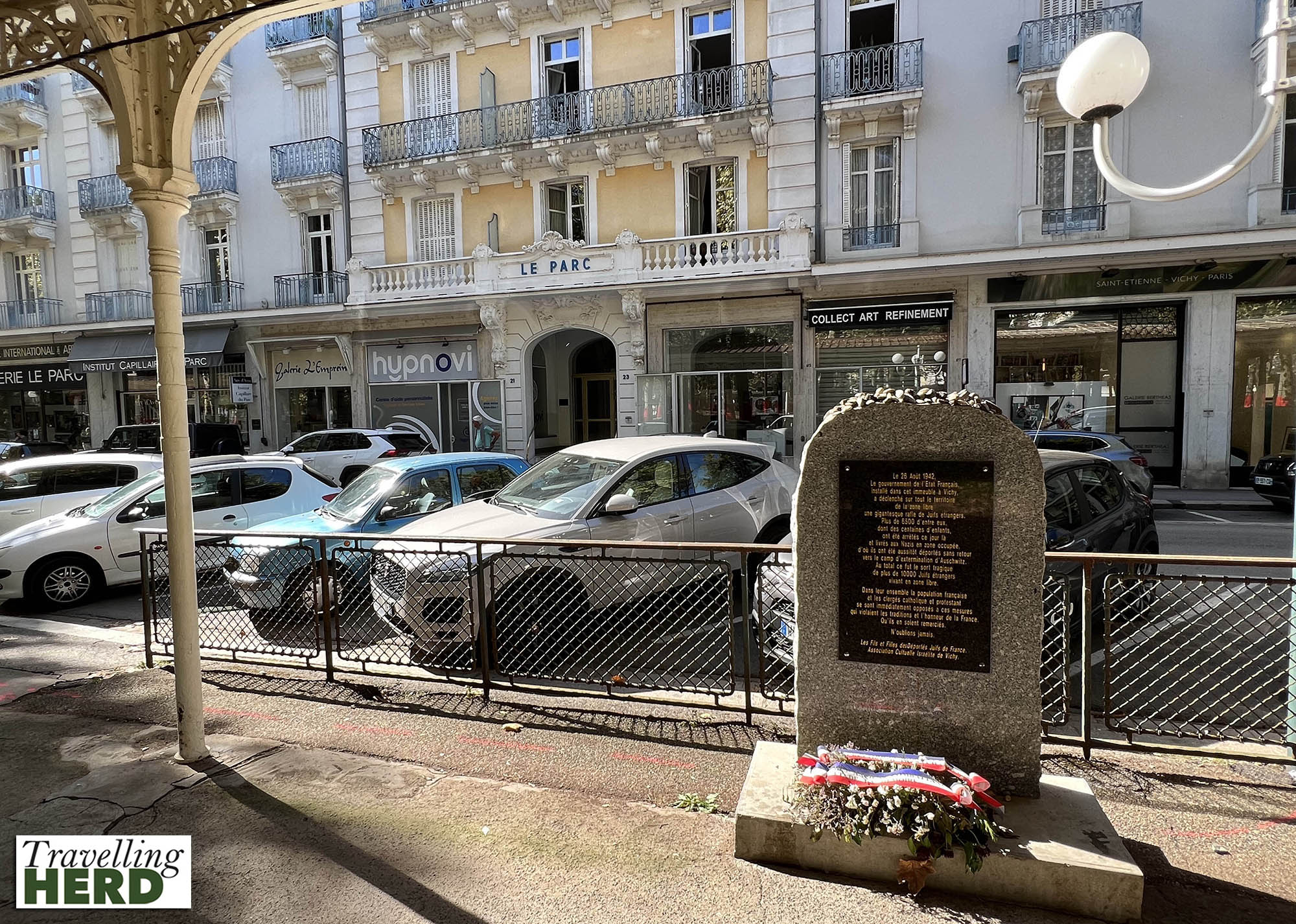
From here we strolled down the Rue Alquié famous for its English-style, smart, terraced houses, some with bow windows, which originally housed officers of the imperial guard.
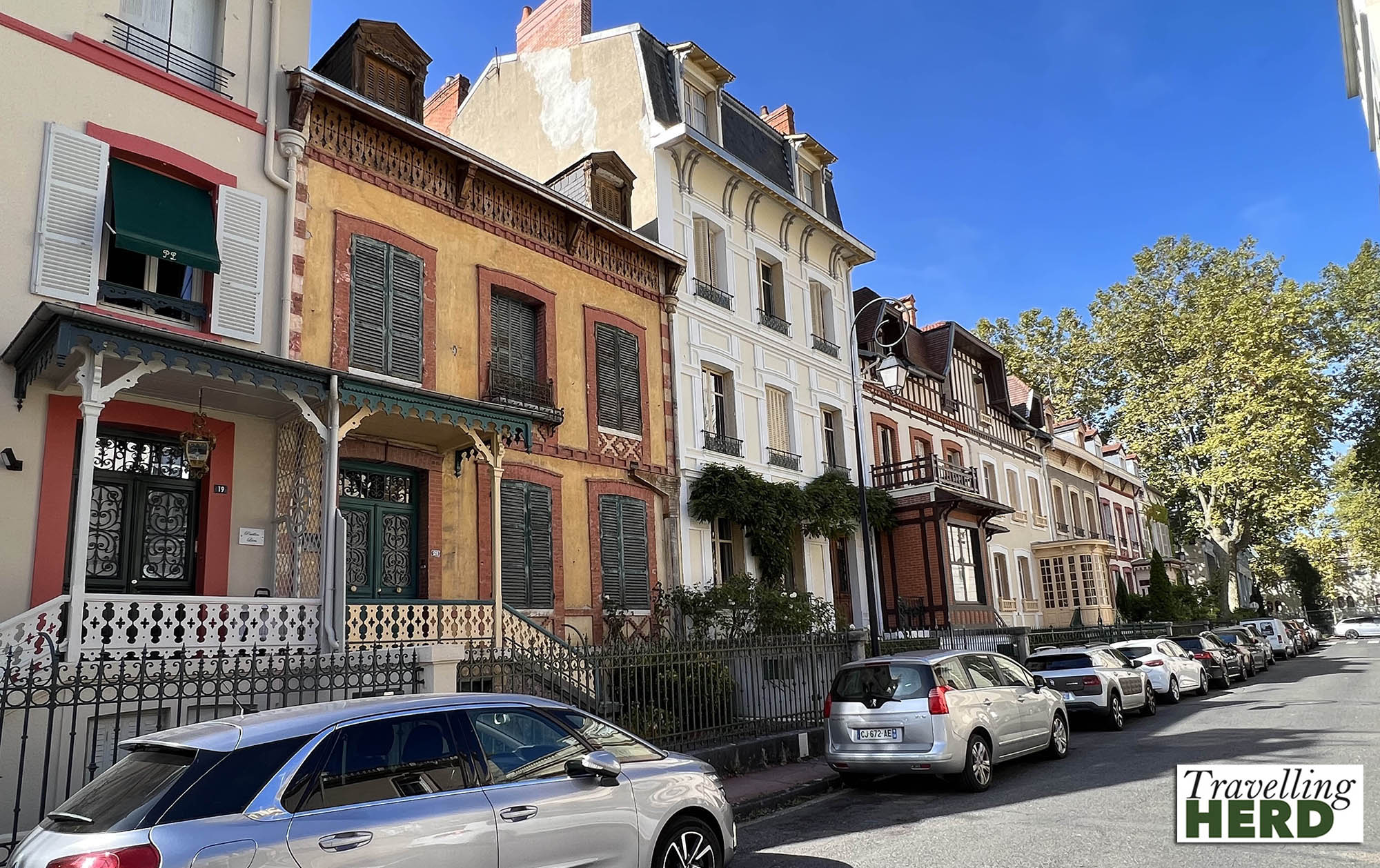
Even the Swiss chalet style buildings are on a grand scale.

The Opera, Casino and and Congress Centre dominate the opposite end of the Parc des Sources from the Hall des Source. The Vichy Opera House [below] was built in 1903 and has distinction of being the only one the Art Nouveau style in France. With a capacity of 1480, it was renovated in 1995 and remains open during the restoration of the park.
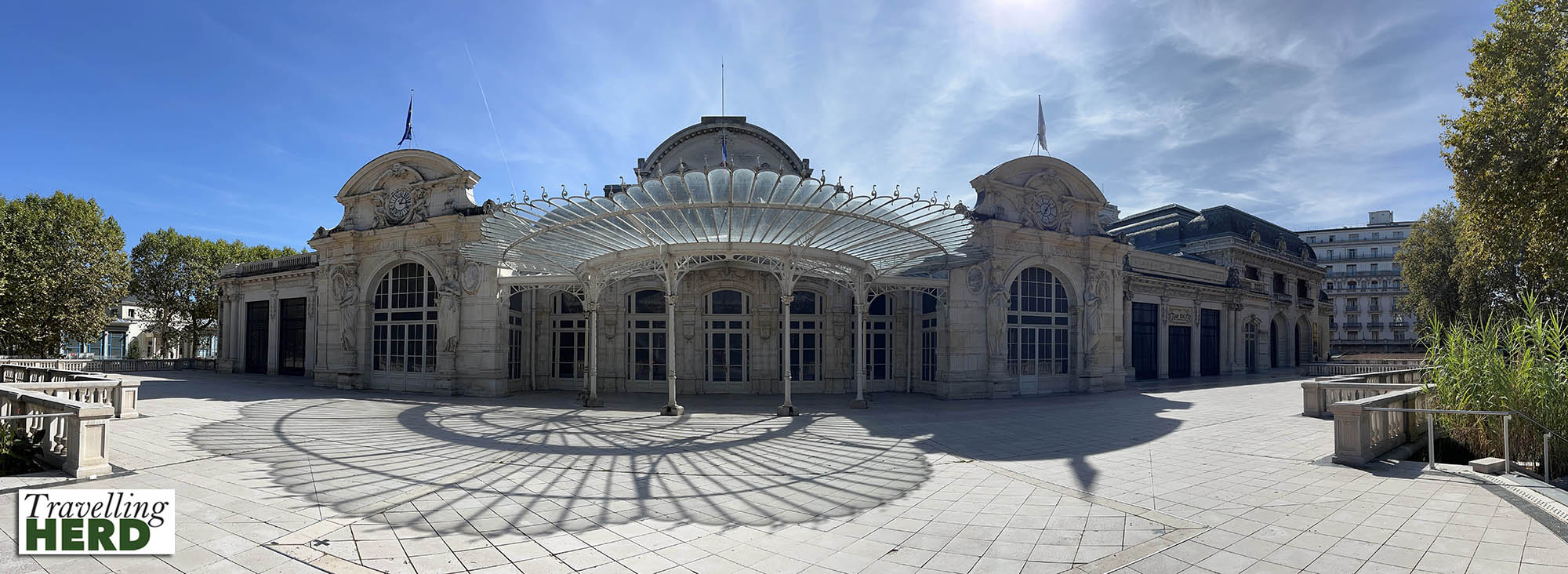
When Napoleon III first came to take the waters in Vichy in 1861, the town had only one church, the church of Saint-Blaise [see more below]. Its priest wanted a grander setting in which to deliver his sermons and asked the emperor to build a new one. The Église Saint-Louis duly opened in 1865.
During the Second World War, the Vichy Government held official services here and Marshal Pétain also often went to Sunday morning mass. Although most Catholics were supportive of Vichy France some priests, including Father Dillard, who officiated here from 1942 objected to its increasingly radical measures. Father Dillard’s sermons subtly criticised the government’s anti-Semitic measures and economic policies. When Compulsory Work Service was implemented in February 1943, Father Dillard left Vichy disguised as a worker and travelled to Germany to organise a clandestine chaplaincy for French workers. Several months later, he was denounced; arrested by the Gestapo and deported to Dachau, where he died in January 1945.
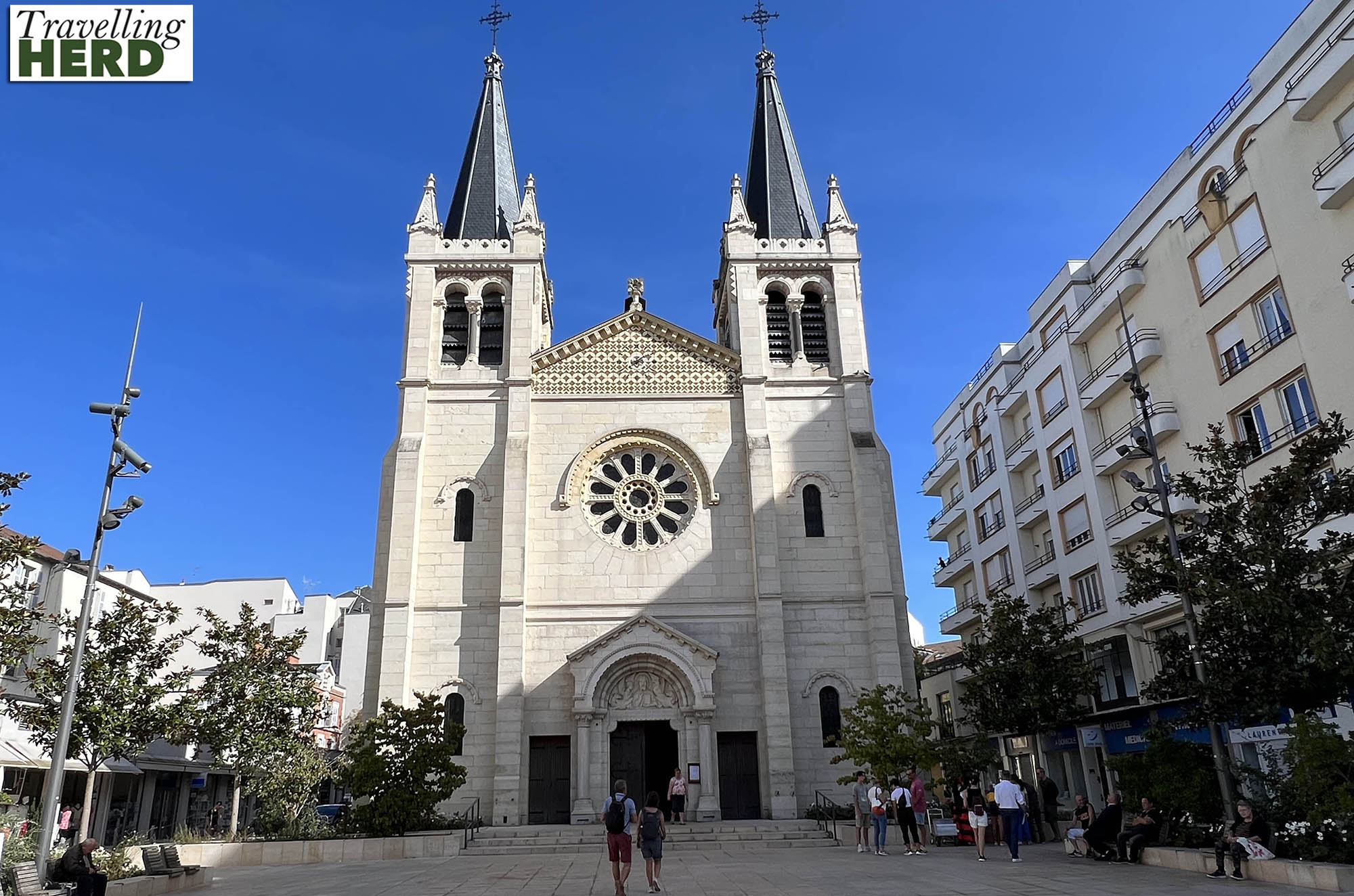
Several covered malls lead back to the park populated by high end brands and tourist shops selling Vichy Pastilles in retro style tins. These are described as ‘a hard candy made with mineral salts from the town’s spring waters and flavoured with aniseed, mint and lemon’. We did not buy any.
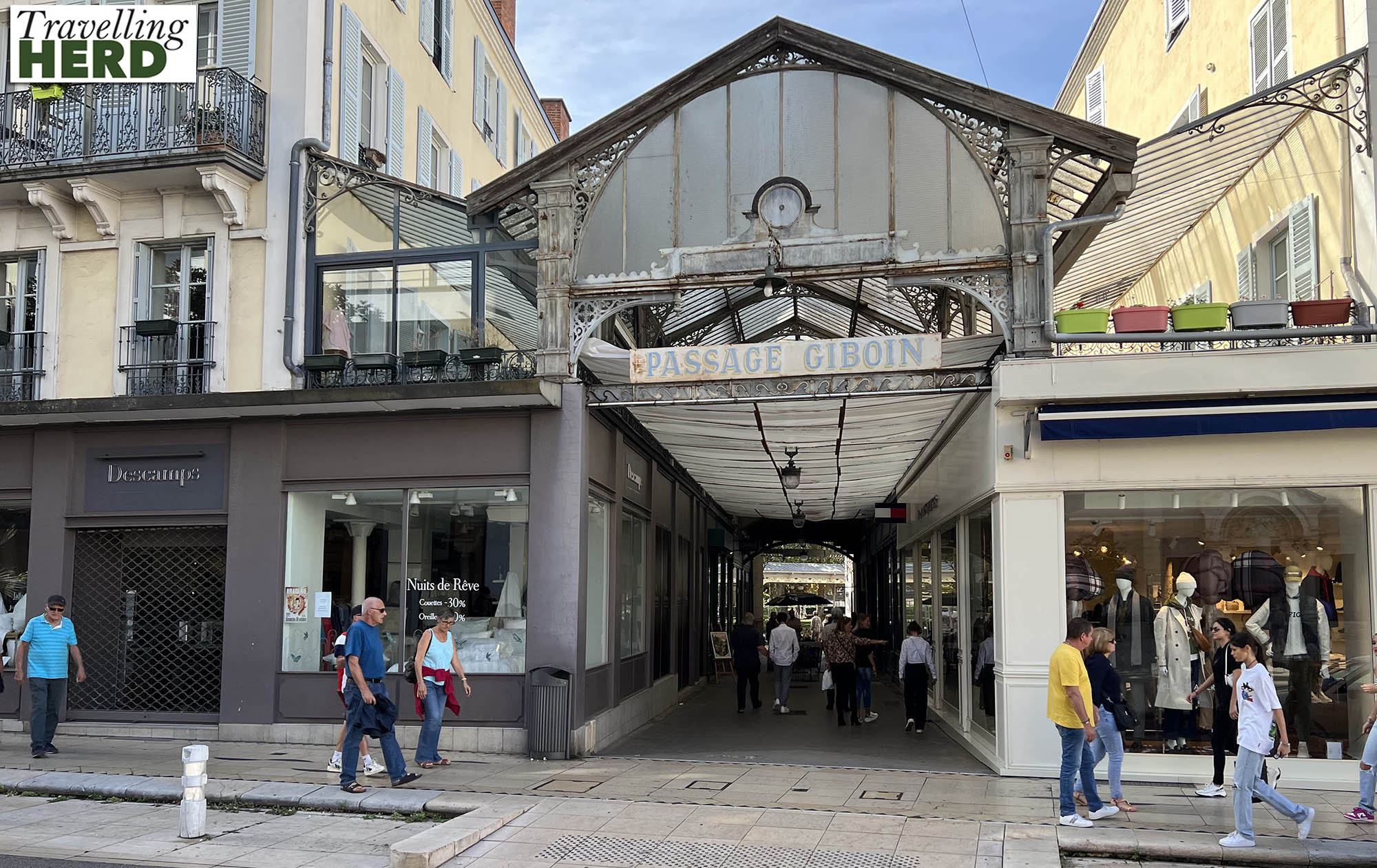
It seems no plot is too small for a grand design and we were quite taken with this building which can be little more than one room deep but proudly demands to be admired.
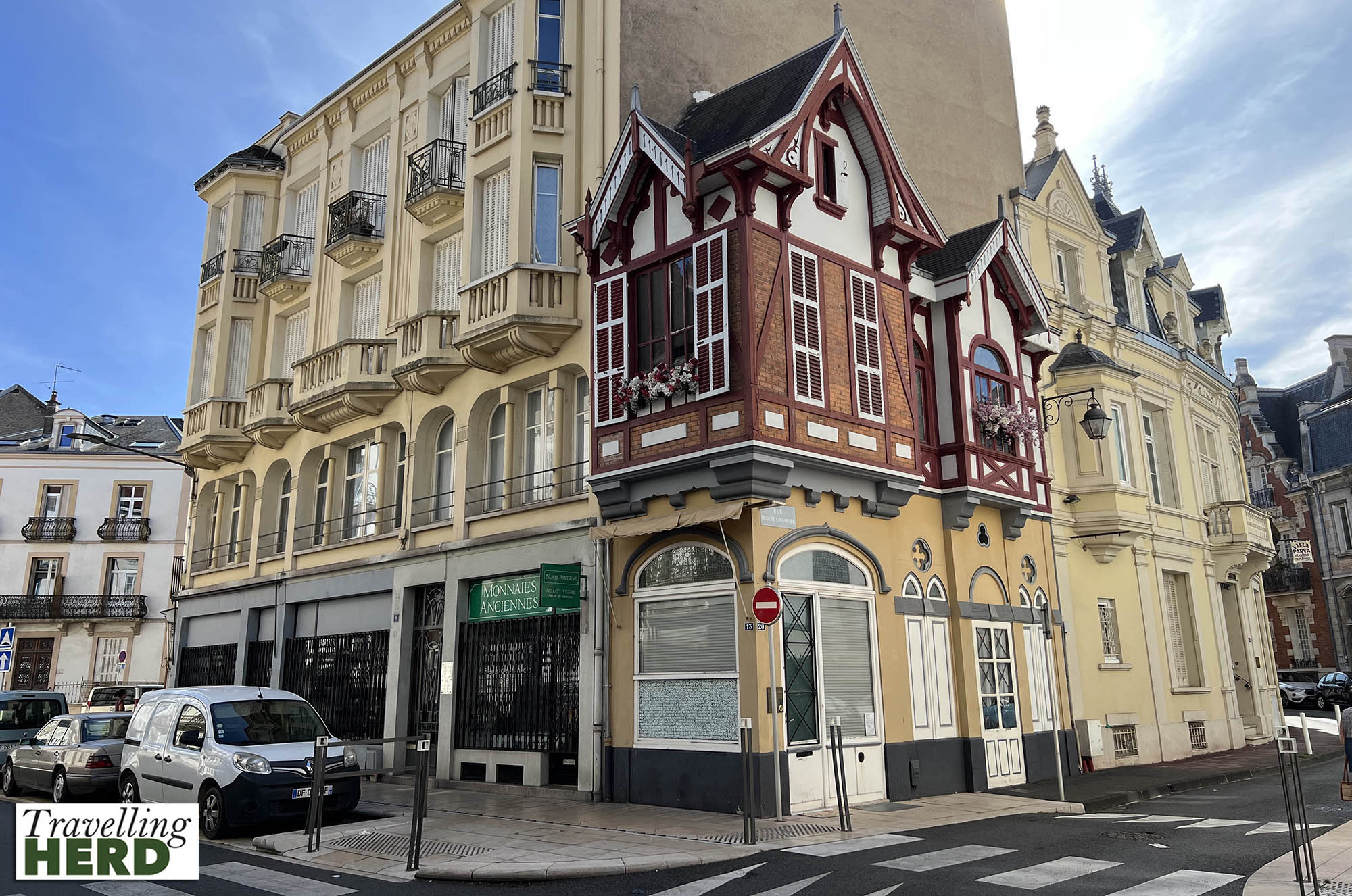
The Église Saint-Blaise is in fact two churches in one: an original 17th-century chapel which nestles against the Art Deco Notre Dame des Malades dating from 1931 which was built to accommodate the growing congregation, swelled by visitors to the spa. As we stood outside looking up at the moulded grey concrete tower a French gentleman spoke to us and after some to and fro we realised that he was telling us that we really should go inside. We did.
The interior and exterior are quite a contrast. The monochrome exterior of the Notre Dame des Malades hides an exuberance of painted columns, ceiling mosaics, stained glass and frescoes depicting some of France’s famous churches. We were pleased to spot a version of Reims Cathedral here. In the old chapel next door stands the “black Madonna” statue, carved from walnut: she is brought out for a mass on the steps of the Grand Casino on August 15 each year.
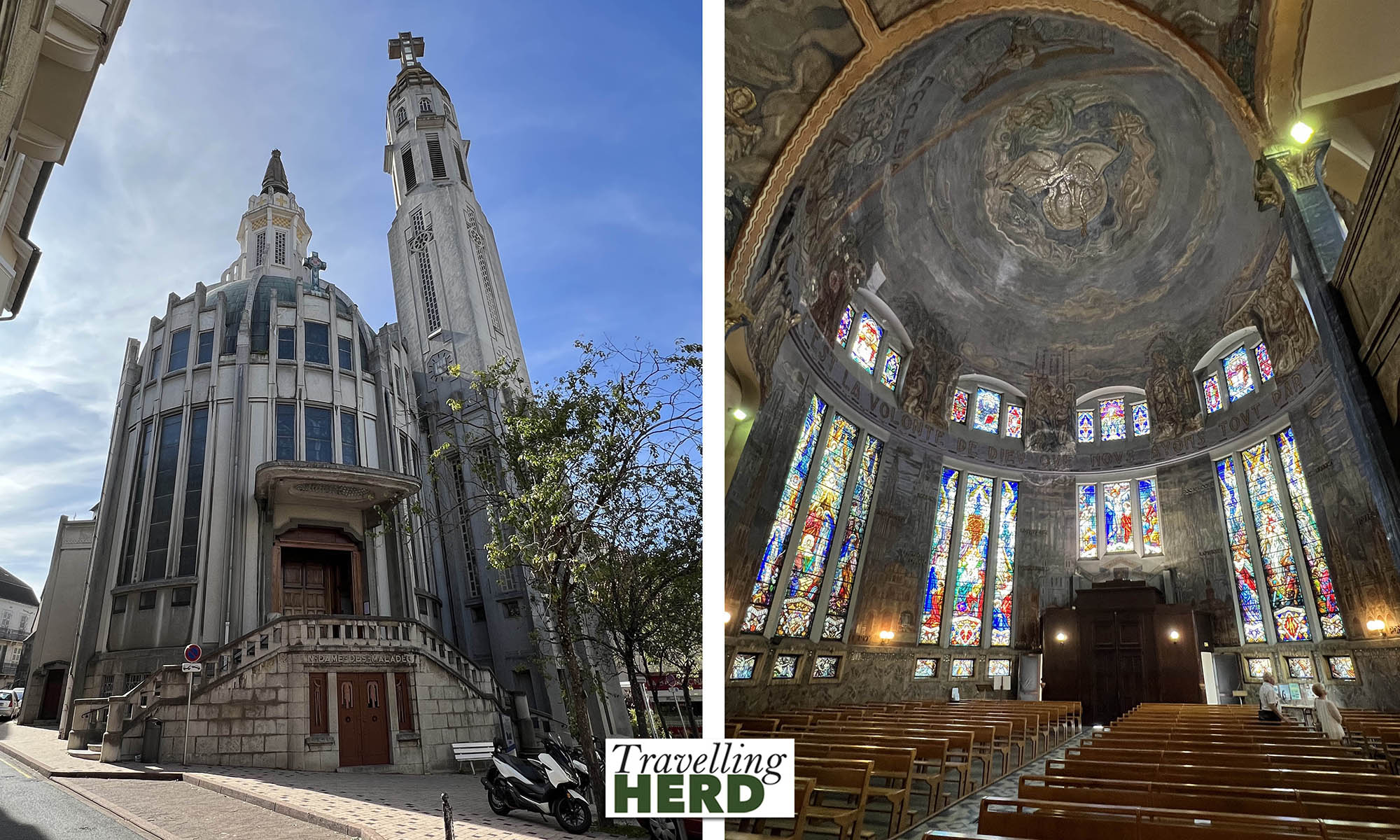
La Source Celestins spring takes its name from the monastic order of the same name (now dissolved) who in the 15th century were charged with caring for the health of bodies and the sanctity of souls. The spring rises within what was the enclosure of their monastery at the foot of the fortified city. Now you can visit the source and try the waters.
We discovered that for Vichyssoise – a leek, potato and chicken soup that is traditionally served cold – to be completely authentic it should be made using Vichy Célestins water.
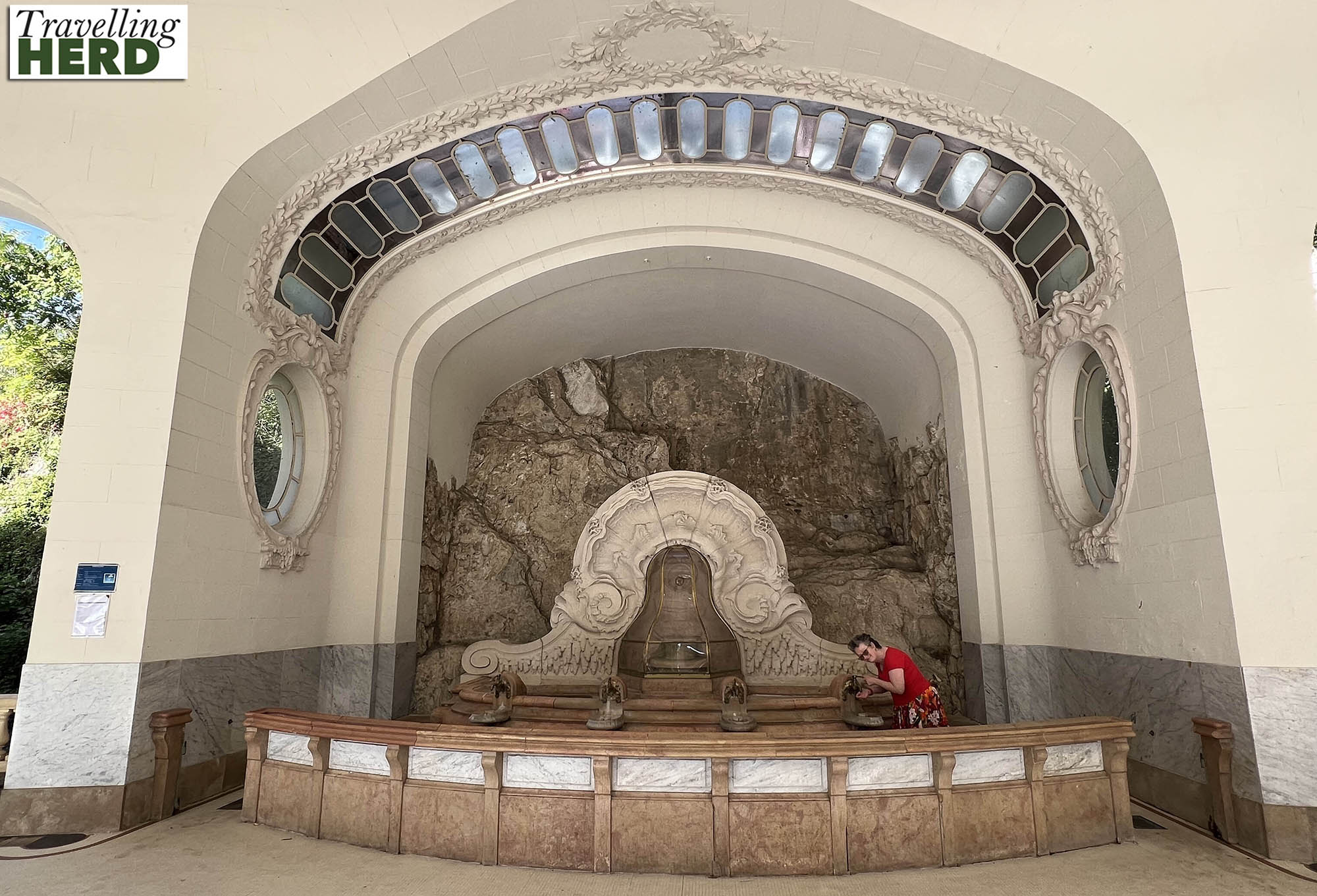
Castel Franc, sometimes called the Maison du Bailliage or Bailiwick’s house, was originally part of the city’s fortifications. Built on the old city walls in 1482, the bailiff lived here. It was used as the town hall from 1801 to 1822, then as a museum between 1937 and 1984. The only surviving feature of the original building is a late Gothic style turret containing a spiral staircase. Building and restoration work is currently underway and it is due to open as a cultural centre next year.
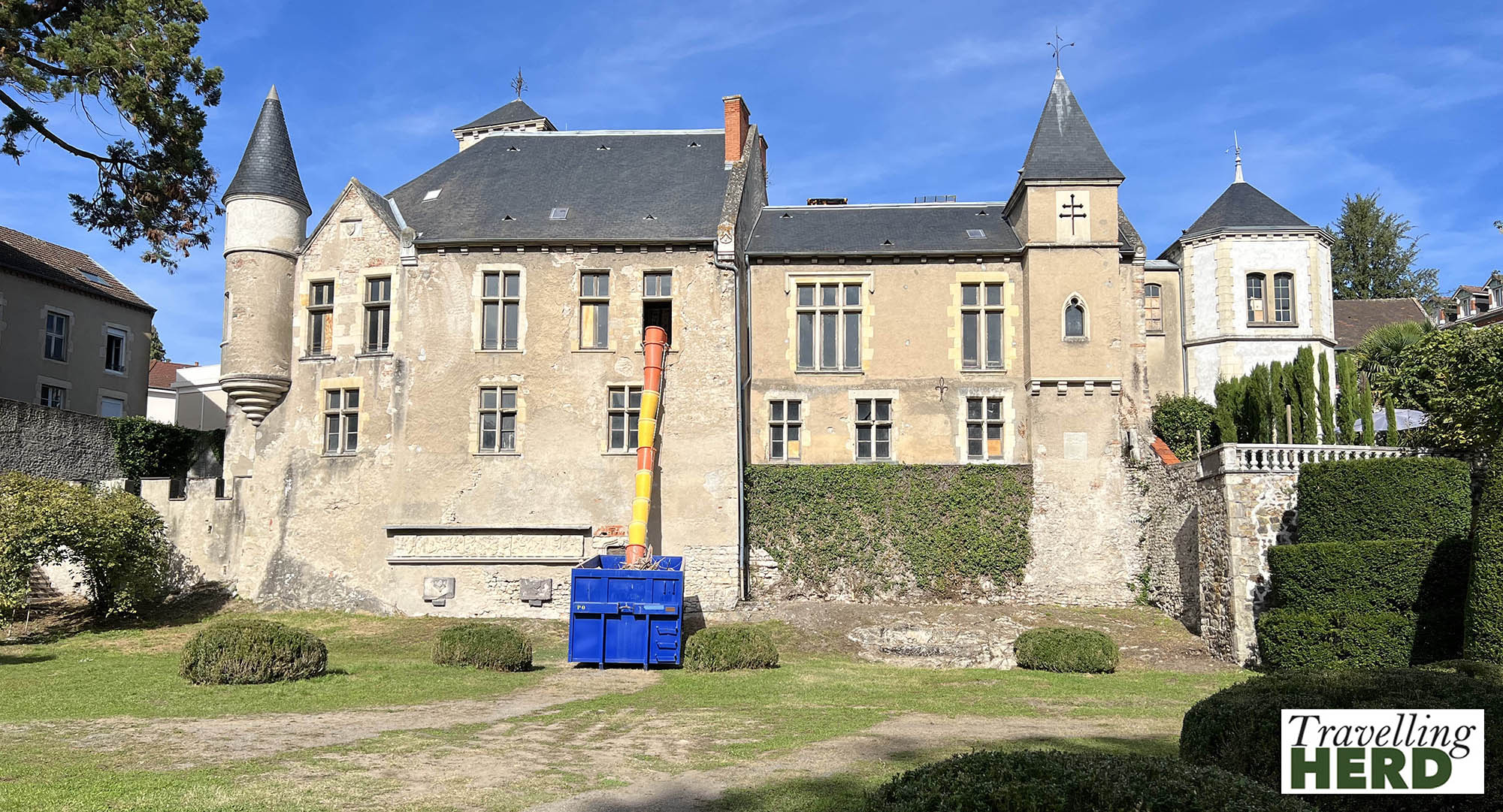
The heat and the walk had made us thirsty and we found a pleasant riverside. Here, after some discussion of our options over a cold drink we decided we would go straight to Lyon the following morning and leave Dijon for another trip. We would like to return to Vichy to see the Parc des Sources once it has been restored.
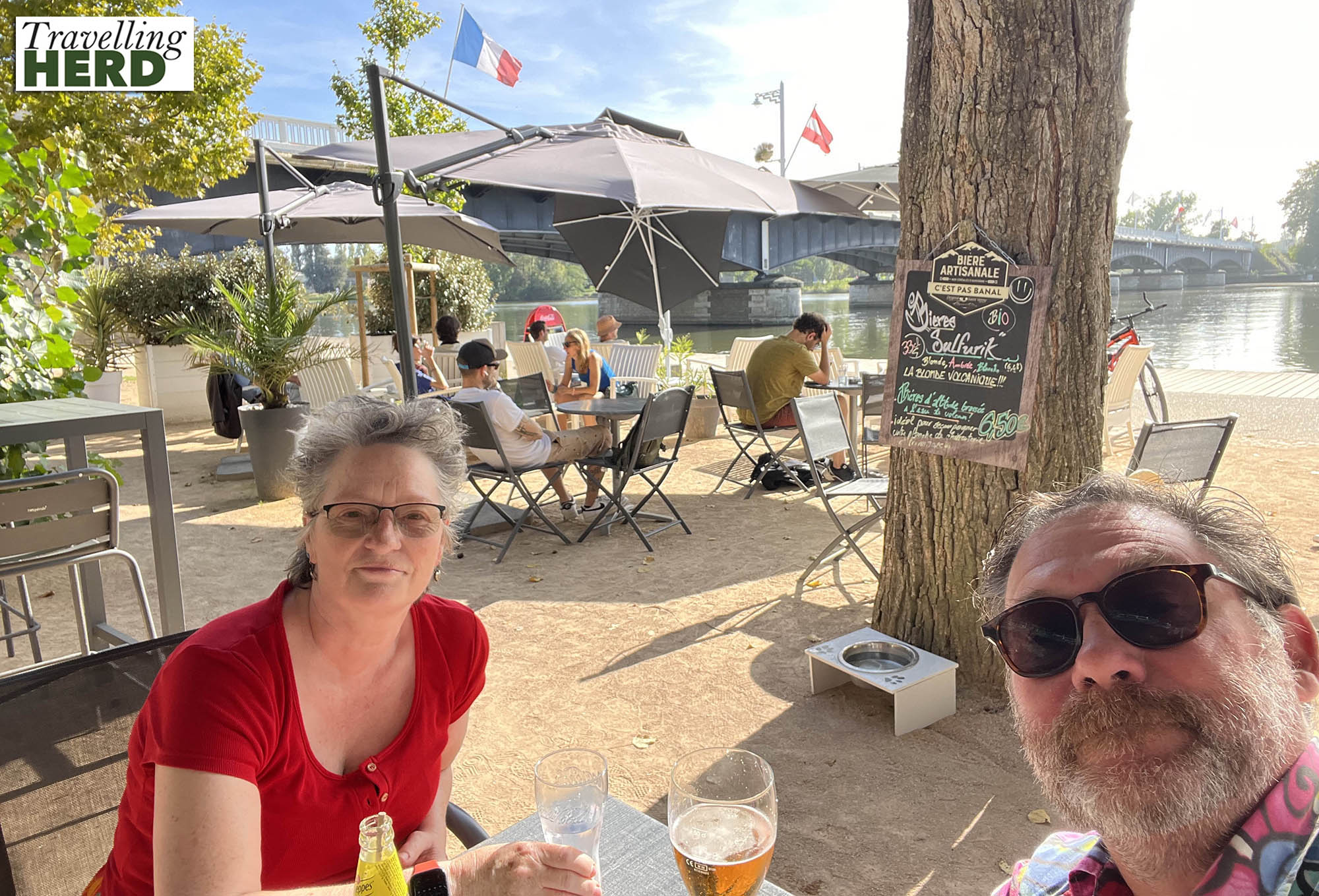
So why ‘Don’t mention the war’? Many know that historically Vichy was the capital of the unoccupied French State during WWII. In theory the unoccupied east and south of France was independent but in reality Pétain ran a puppet government here while de Gaulle ran the government in exile in the UK. The people of France and the citizen’s of Vichy are understandably reticent about their association with the Nazis and as a consequence Vichy is promoted as a spa town and there is little or no attempt to address or acknowledge the four ‘dark’ years between 1940 and 1944.
Video of the day:
Selfie of the day:
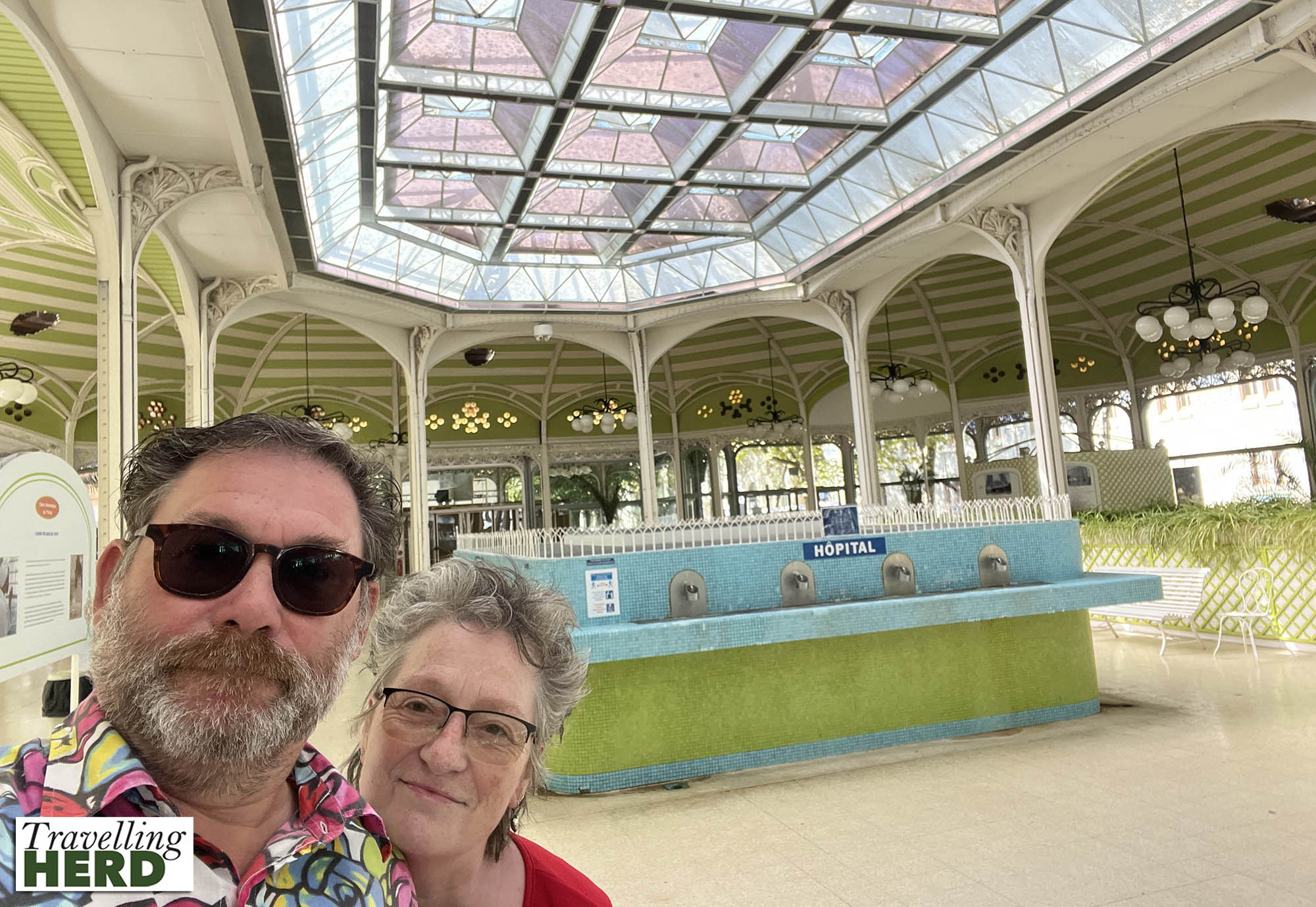
Route Map:
